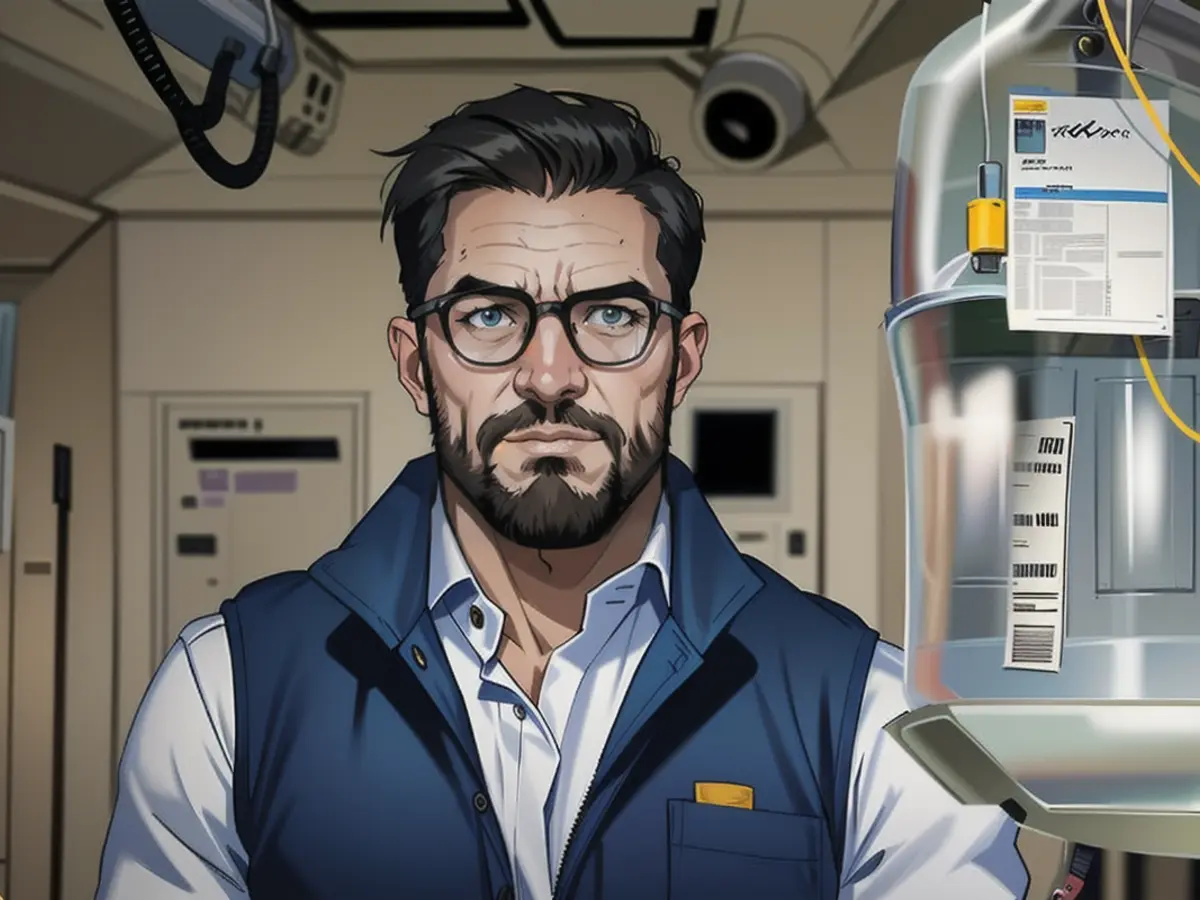Could cryonics bring about life after death?
Some believe in the promise of life beyond death, and this is what cryonics aims to achieve. Individuals spend their lifetime's savings to be frozen after they pass away, hoping for a better future. However, can replacing blood with antifreeze truly make this a reality?
Klaus Sames, a 85-year-old, is certain about one thing - he doesn't want to become a corpse. He sees cryonics as the solution, with his blood being replaced with medical antifreeze and his body cooled with liquid nitrogen at -196 degrees Celsius. This process, called cryopreservation, is Sames' insurance policy for a future revival. But can this ever take place?
Considered a cryonics pioneer in Germany, Sames is a former gerontologist. He spent years in Ulm, researching and living there before moving to Hersbruck, northern Bavaria. He initially wanted to use his research to eliminate aging, but his efforts didn't succeed. Now, he's exploring cryonics as a continuation of his work. "We are simply expanding the possibilities that medicine can offer," he states.
Some critics, like Professor Stefan Schlatt from Münster University, don't believe cryopreservation is possible. While we're getting better at freezing, he thinks there won't be a magic cure. But he's also adamant it's not wise. "This is an unrealistic approach," says Schlatt. "It's vital for evolution that living beings die and make way for the next generation."
Cryonics has existed since the 1960s, but what keeps people like Sames going? According to Dr. Eckhard Nagel of the University of Bayreuth, cryonics is a means to avoid the inevitability of death. "It's largely a fear of dying and an inability to accept one's own mortality," he explains. Nagel believes the concept is ridiculous. "If you managed to treat the reason someone died and successfully restore a body filled with antifreeze, all you'd be doing is waking up a corpse with no future prospects."
Sames is undeterred and willing to pay a significant price for this possibility. With 28,000 USD, he's storing his body in a cooling tank at the Cryonics Institute in the US. There are 250 people already stored this way, while almost 2,000 have contracts. The two major US providers, the Alcor, were established in the 70s and call themselves non-profit organizations.
death, cryonics, medical antifreeze, cryopreservation, Einträge zu Alcor, Cryonics Institute.
The concept may seem a peculiar idea for older generations fearing their demise. However, many young people also ponder over the question: what comes next, and does life always have to end? Two years ago, Dr. Emil Kendziorra founded the Berlin start-up Tomorrow Bio, offering cryopreservation in Europe. Currently, 400-500 individuals have contracts, with Kendziorra himself included. The majority are between 30 and 50 years old, he says. Tomorrow Bio converted several ambulances into mobile treatment centers. Upon someone's declaration of clinical death, cryopreservation can begin. These individuals will be stored in a Swiss facility. The entire process costs 200,000 euros. The majority (120,000 euros) fund a foundation that will finance the storage of these bodies indefinitely.
Bayreuth-based physician Nagel recalls the sale of indulgences during the Middle Ages, which manipulated people's lack of knowledge and terror of eternal damnation in hell. He compares this to the current state of cryonics, stating, "This unpleasant practice has not lost any relevance or repulsiveness." Schlatt, a specialist in reproductive medicine, also finds cryonics ethically dubious: "It's a hideous way of profiting on an imagined possibility."
Kendziorra rebuts their arguments. He believes he could earn money more effectively elsewhere. The goal of the company is to make cryopreservation more affordable, which would occur if more people were to choose it. He acknowledges, however, that the process is undoubtedly uncertain: "You're wagering on future technologies to some degree." Additionally, he points out numerous unresolved issues, telling clients, "I don't want you to choose cryopreservation without fully understanding the risks and challenges."
Hope and Challenges
Both Sames and Kendziorra remain hopeful regarding progress in nanotechnology. Nonetheless, Sames emphasizes the need for additional research. A significant hurdle is restoring body temperature after cryosleep without causing damage. Cutting-edge techniques are being explored.
The biggest issue, according to Sames, is the reversal of aging and related pathological changes. It will likely take another 200 years before medicine is ready to handle these challenges, suggesting, "We'll have to be patient and observant."

Read also:
- This will change in December
- Dikes withstand water masses so far - Scholz holds out the prospect of help
- Fireworks and parties ring in 2024 - turn of the year overshadowed by conflicts
- Attacks on ships in the Red Sea: shipping companies avoid important trade route
In the realm of ageing research, Klaus Sames, a former gerontologist, initially sought to eliminate aging but failed. Now, he explores cryonics as a continuation of his work, viewing it as an expansion of medicine's capabilities. (Biotechnology, Ageing research, Medicine)
Despite the doubts of some critics, such as Professor Stefan Schlatt, who believes that cryopreservation is an unrealistic approach and not wise, many individuals continue to invest in cryonics as a means to avoid the inevitability of death. (Cryonics, Death)
The field of biotechnology continues to advance, with technology companies like Tomorrow Bio offering cryopreservation services, with hopes that future advancements in nanotechnology could potentially lead to life after death. (Biotechnology, Question & Answer, Health)
Source: www.ntv.de







